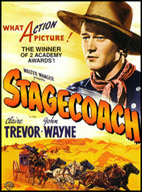Film Score: James Horner Cinematography: Donald Peterman
Starring: Wilford Brimley, Don Ameche, Hume Cronyn and Jessica Tandy
Though Ron Howard had his first taste of wider audience success as a director with Night Shift, his real breakout film was Splash two years later. His follow up to that hit was another water-based production, this one more straight out science-fiction. Cocoon is based on a story by writer-director David Saperstein that both he and screenwriter Tom Benedek took in different directions, Saperstein writing a novel that uses the idea but not the specific characters while Benedek went in the familiar direction of the film. There are actually four threads to the film, the first being the group of space aliens who have returned to the planet Earth to rescue some of their people who were left behind. There is also a group of old folks in a retirement community in Florida who are listlessly living out their last years. One of the old couples has a daughter and grandson living nearby. Finally, there is a charter boat captain who has fallen on hard times. By the end of the film all four strands weave together.
The story begins with an alien spacecraft flying mysteriously toward Earth. Down below are a trio of old men, Don Ameche, Wilford Brimley and Hume Cronyn. They go swimming everyday in the pool of a vacant house next door to the retirement community where they live in Florida. At the same time Steve Guttenberg has had a lousy day fishing on his charter boat and his clients only pay him half his money, which the dock owner quickly relieves him of. Desperate, he is saved by a group of people led by Brian Dennehy who want to charter his boat for an entire month. They also rent the house where the old men are using the pool, and while deep sea diving on Guttenberg’s boat they bring up mysterious objects from the ocean floor and deposit them in the pool. The old men wonder briefly what they are, but don’t really care, especially after they begin feeling better than they have in years. They have found, it seems, some sort of fountain of youth. The pool, they soon discover, is energized to bring back the alien friends of Dennehy and when the old men and their wives keep swimming in it they start actually becoming younger, something everyone around them quickly notices.
The film was a real renaissance for many of the older actors in the cast. What’s not commonly realized, however, is that Wilford Brimley was much younger that the rest of the male quartet. He was only fifty when he made the film, while Don Ameche, Hume Cronyn and Jack Gilford were in their late seventies. Still, with his older look he fit right in, and no doubt had an easier time during the rejuvenation sequences. Don Ameche already began his comeback a couple years earlier with Trading Places, while Hume Cronyn went on to a small part in The Pelican Brief and a revival of 12 Angry Men on television. Easily the biggest beneficiary from this renewed interest in the elder stars was for Jessica Tandy with an Oscar-winning performance in Driving Miss Daisy in 1989 and another nomination two years later for Fried Green Tomatoes. The only one of the cast actually recognized by the Academy Awards, however, was Don Ameche who won that year for best supporting actor.
But all the members of the ensemble cast are very good. Dennehy is joined by Raquel Welch’s daughter Tahnee Welch in one of her earliest and best performances on film, as well as Tyrone Power Jr. as the aliens. Wilford Brimley’s wife in the picture is Maureen Stapleton, while Don Ameche pursues Gwen Verdon romantically. Ron Howard originally wanted Joan Bennett to play the role but she had been talked out of it by her husband. And of course one of the most well-known couples in Hollywood, Hume Cronyn and Jessica Tandy played the other couple. Tangentially, Jack Gilford and Herta Ware are the fourth couple but they remain at a distance philosophically from the rest of the group about the pool. Linda Harrison makes a rare appearance on film since her Planet of the Apes days as Nova, and Barret Oliver does a tremendous job as the young grandson. This was not a film that was ever destined for critical success, but it is a popular film for a lot of people. The feel good quality of the story, and the wonderful actors, combined with a tantalizing ending of hope is almost perfect cinematic escapism. And Cocoon delivers on all accounts.
















